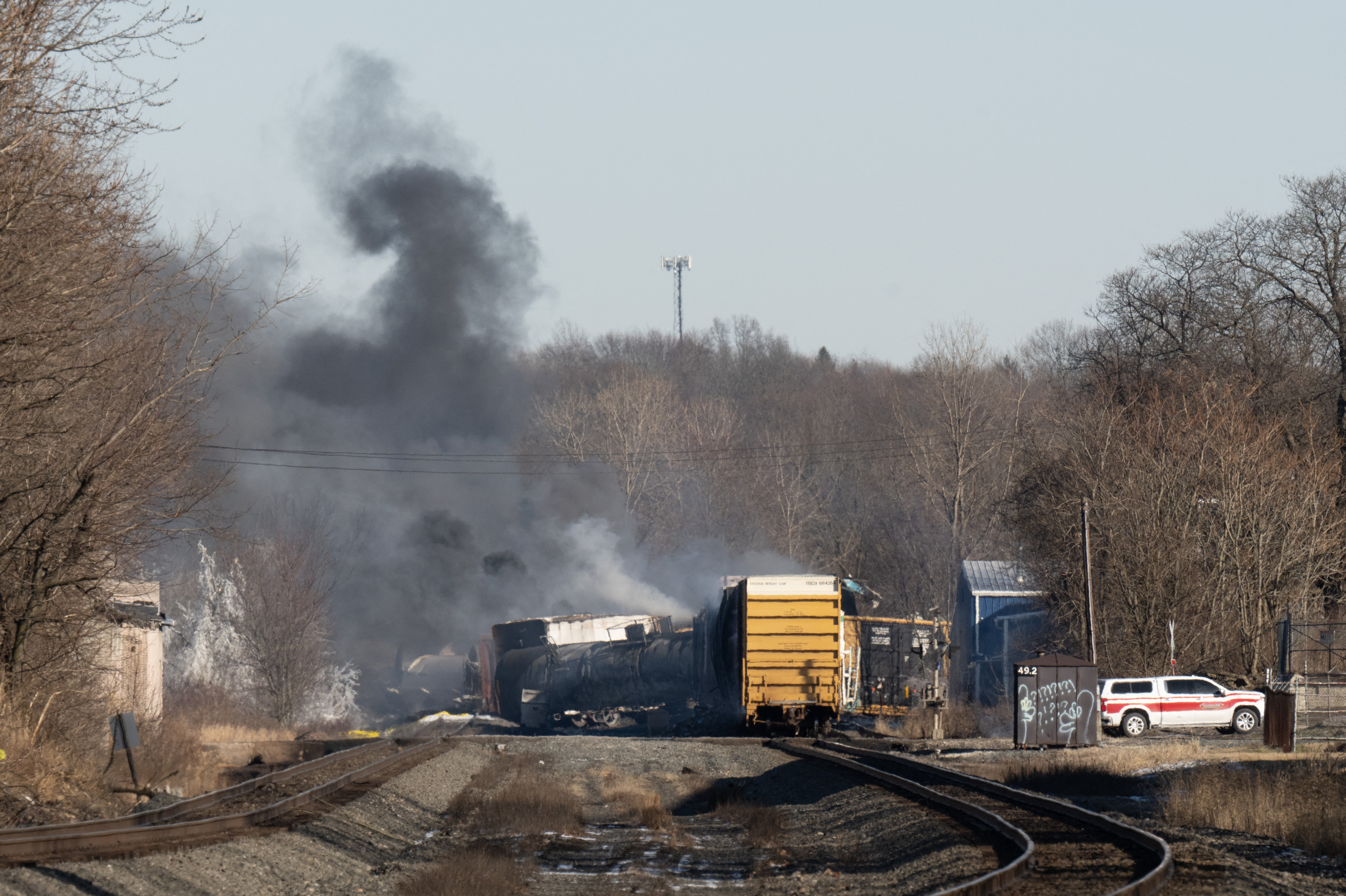Ohio Train Derailment: The Long-Term Effects Of Toxic Chemical Exposure In Buildings

Table of Contents
Assessing the Extent of Building Contamination
The derailment released a cocktail of hazardous chemicals, including vinyl chloride, butyl acrylate, and others, into the environment. These substances can persist in building materials, particularly porous surfaces like drywall, insulation, and carpeting, as well as HVAC systems, posing a significant long-term risk. Accurately assessing the extent of contamination presents numerous challenges. The sheer scale of the affected area, coupled with the diverse construction of buildings, makes consistent testing extremely difficult.
- Testing methods: Detecting chemical residue requires sophisticated techniques like air sampling, surface wipe sampling, and material analysis, each with limitations and varying degrees of sensitivity.
- Access limitations: Thoroughly testing all potentially affected areas, including hard-to-reach spaces within buildings, presents significant logistical hurdles.
- Material variability: The type of building materials significantly influences the extent of contamination. Porous materials absorb chemicals more readily than non-porous ones.
- Transparency and independent testing: The need for independent testing and transparently released results is crucial to build trust and ensure accurate assessment of the risk. Without this, residents are left with uncertainty and fear.
Health Risks Associated with Long-Term Exposure
Exposure to the chemicals released during the Ohio train derailment carries significant long-term health risks. Vinyl chloride, for example, is a known carcinogen linked to liver cancer, brain cancer, and other serious illnesses. Butyl acrylate can cause respiratory irritation, skin sensitization, and eye damage. The long-term effects of exposure to a mixture of these chemicals, especially at lower levels over extended periods, are still being investigated but are a major cause for concern.
- Respiratory problems: Asthma, chronic obstructive pulmonary disease (COPD), and lung cancer are potential long-term health consequences.
- Neurological disorders: Exposure to certain chemicals can lead to neurological disorders, impacting cognitive function and motor skills.
- Cancer risks: Several of the released chemicals are known carcinogens, increasing the risk of various cancers.
- Reproductive health issues: Some of these chemicals may adversely impact reproductive health in both men and women.
- Vulnerable populations: Children, the elderly, and individuals with pre-existing health conditions are particularly vulnerable to the adverse effects of chemical exposure.
Mitigation and Remediation Strategies for Contaminated Buildings
Cleaning and remediating contaminated buildings requires a multi-pronged approach tailored to the specific type and extent of contamination. This process is complex and expensive.
- Decontamination techniques: This may involve air scrubbing to remove airborne contaminants, surface cleaning to remove chemical residue, and in severe cases, removal and replacement of contaminated materials.
- Ventilation and filtration: Installing and maintaining effective ventilation and air filtration systems is critical to reducing indoor air pollution.
- Government and private sector roles: Both government agencies and private contractors play crucial roles in the remediation process, requiring close coordination and oversight.
- Relocation assistance: Providing safe and healthy housing alternatives for residents who cannot remain in contaminated buildings is essential.
Legal and Ethical Implications of the Ohio Train Derailment
The Ohio train derailment raises significant legal and ethical questions. Norfolk Southern, the railway company responsible for the train, faces potential lawsuits from affected residents seeking compensation for property damage and health problems.
- Legal precedents: Legal precedents from past environmental disasters will inform the legal battles to come. Establishing a clear link between exposure and resulting health problems is crucial.
- Proving causality: This process is often complex and challenging, requiring extensive scientific evidence.
- Access to legal resources: Affected residents need access to legal representation and resources to navigate the legal complexities.
- Government oversight and regulations: Strengthened government regulations are needed to prevent similar incidents and ensure accountability.
Protecting Communities from the Long-Term Effects of the Ohio Train Derailment
The Ohio train derailment highlights the devastating long-term health risks associated with building contamination from toxic chemical exposure. Comprehensive testing, effective remediation strategies, and robust legal frameworks are crucial to protect affected communities. We must learn from this tragedy and implement measures to prevent future incidents. Stay informed about the ongoing situation, support affected residents, and demand accountability from those responsible. Contact your representatives and advocate for stricter regulations to prevent future Ohio train derailment-type events and protect our communities from the devastating consequences of toxic chemical exposure in buildings.

Featured Posts
-
 Nrc Health Achieves 1 Best In Klas For Healthcare Experience
May 02, 2025
Nrc Health Achieves 1 Best In Klas For Healthcare Experience
May 02, 2025 -
 Premature Death Risk Doctors Point To This Food As More Dangerous Than Smoking
May 02, 2025
Premature Death Risk Doctors Point To This Food As More Dangerous Than Smoking
May 02, 2025 -
 Rupert Lowe Police Report Filed Amid Uk Reform Bullying Allegations
May 02, 2025
Rupert Lowe Police Report Filed Amid Uk Reform Bullying Allegations
May 02, 2025 -
 Six Nations Frances Victory Scotlands Defeat Ramoss Performance
May 02, 2025
Six Nations Frances Victory Scotlands Defeat Ramoss Performance
May 02, 2025 -
 Baitulmal Sarawak Salurkan Bantuan Rm 36 45 Juta Kepada Asnaf Mac 2025
May 02, 2025
Baitulmal Sarawak Salurkan Bantuan Rm 36 45 Juta Kepada Asnaf Mac 2025
May 02, 2025
